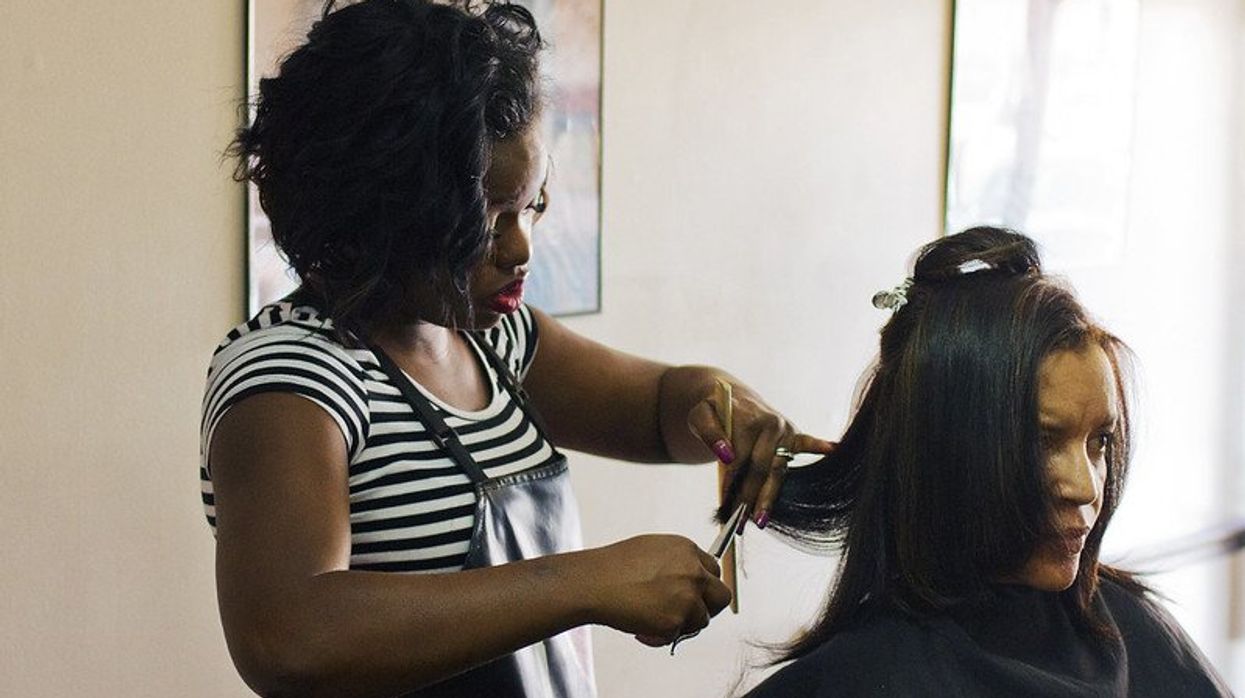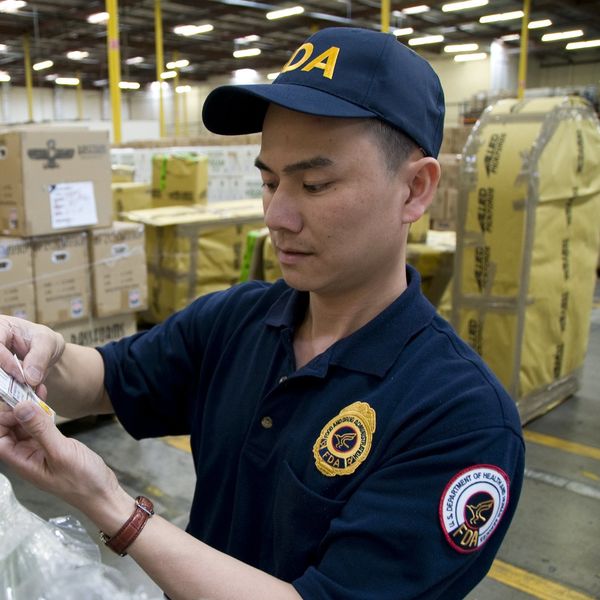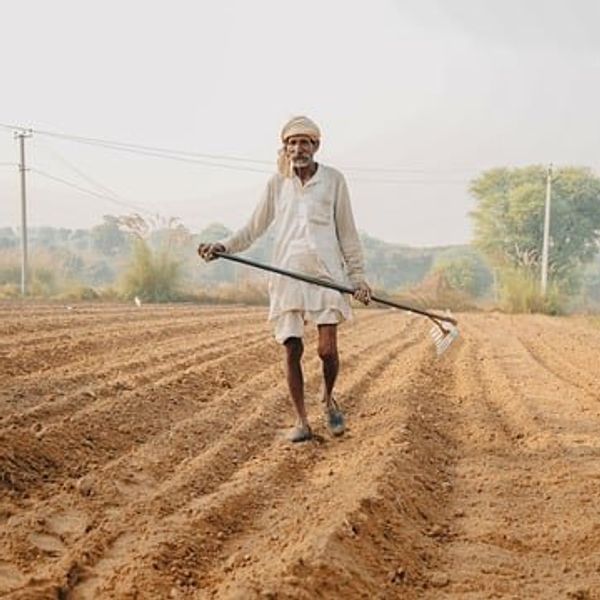As my toddler girls frolic through our community garden picking fresh cherry tomatoes from our plot, I smile at their sense of wonder about growing food.
Their eyes widen and their smiles beam as they admire how the seeds we planted earlier in the season are now full-grown plants. The scent of summer rain is in the air and I’m excited to begin harvesting okra, which I will freeze to make gumbo in the fall. Although gardening was not part of my childhood, I reclaimed the connection to the land to continue that legacy for my family. My maternal great-grandparents in Opelousas, Louisiana, grew sweet potatoes, okra, watermelon and other produce to sell at the French Market in New Orleans. My paternal great-grandparents owned vegetable and dairy farms in Mansfield, Louisiana. Local agriculture was not only a source of food and income, but a means of community, partnership and connection.
While my youngest daughter is chasing butterflies that frequent the marigolds in a neighboring garden plot, my oldest daughter is examining a ladybug on a cucumber vine. “Mom, what do ladybugs eat? Why are ladybugs good for our garden? But how?” This space is a living classroom that can teach us to question the “what?” “why?” and “how?” of partnerships that benefit all of its members.
Community gardening and other types of urban agriculture can be powerful tools to advance food sovereignty, build community connections and educate. As described in Dr. Ashley Gripper’s Agents of Change essay, people of color and grass-root environmental justice organizations have transformed vacant lots and other sites into community gardens and farms that foster spiritual healing, strengthen community-building and combat food apartheid – discriminatory policies and practices that prevent marginalized groups from accessing affordable, sustainable, nutritious, high-quality and culturally connected food.
This essay is also available in Spanish
Unfortunately, the same communities impacted by food apartheid often live in areas where disinvestment, racial segregation and other inequalities result in disproportionally high exposures to harmful chemicals in air, water and soils – which might be used for urban agriculture. Communities of color are more likely to be near hazardous waste sites, highways and other pollution that may result in elevated heavy metal soil concentrations, such as lead. Data show children from racial and ethnic minority groups and children in low-income communities are more likely to have higher blood lead levels. Some garden practices can introduce chemicals into the garden like pesticides, and gardening materials such as landscape fabrics can be a source of microplastics.
I want to be clear: the benefits of gardening in communal settings should not be stifled by potential contaminant risks. Rather, we should look for ways to reduce chemical exposures in gardens. To do that, we need to ensure effective collaborations exist involving every sector interested in community gardens, including education, nutrition, urban planning, research and government.
Potential pollution in community gardens

Community garden in metropolitan Atlanta where author Candis Hunter serves as a member and volunteer.
Credit: Candis Hunter
Urban soils can harbor dangerous chemicals. It could be that current and historical land uses, like industrial activities or agriculture, exposed the soil to toxics and pesticides. Treated wood, burned tires or pollution runoff can leach chemicals into the soil. Chipping paint from older buildings and heavily trafficked roads might create lead soil deposits. People can be exposed to these chemicals by breathing in soil particles, eating tiny bits of soil that may not have been washed off from produce, or eating produce that has absorbed the contaminants (although this is an unlikely source of exposure, depending on factors such as the plant species and soil composition).
Children, however, are at a greater risk, because they often are putting things into their mouths and are more curious than adults. I think about my own toddlers, who enjoy playing in the garden soil and exploring the outdoors with all five senses. It’s scary to think about how even a tiny amount of ingested lead from the soil could damage their growing brains and nervous systems. I also wonder whether gardeners were aware of these chemical risks and what resources could help protect them.
These questions led me to focus on how community gardeners could reduce their exposures to heavy metals in soil for my doctoral thesis. Practices such as heavy-metal soil testing, composting, mulching and hand washing can reduce exposure – something that community gardeners are interested in, according to my results. While testing and hand washing are self explanatory, composting can contain organic matter that makes it more difficult for some plants to absorb contaminants and mulching helps to reduce contaminated soil from being redispersed in the air. However, I identified several barriers gardeners face when trying to protect themselves, like soil testing costs, concerns about property values and the legal implications of soil lead, a lack of training to interpret the results, among others. Although my research focused on individual gardener practices to reduce exposures, I became interested in how these findings could materialize into tools and policies that may be adopted in community gardens.
There are existing partnerships that address these barriers. For example, soil screening, health, outreach and partnership (soilSHOP) events provide free lead education and soil lead screening to communities in the U.S. As I dug deeper trying to understand how to make these partnerships work, I started to wonder, just like my curious child looking at the mutually beneficial relationships between ladybugs and cucumber vines, how we can make the diverse partners (gardeners, schools, faith-based communities, neighborhoods, non-profit organizations, government) invested in community gardens work together to advance environmental justice and health equity.Turning research into policy: Implementation science

Environmental justice researchers have shown communities of color are impacted by higher heavy metal soil concentrations and a lack of access to affordable, sustainable, nutritious, high-quality and culturally connected food.
Credit: Unsplash+
A possible answer could be implementation science, which means investigating the ways in which research results can become widespread practices and policies. A research study may show that free lead soil screening is an effective community-engagement tool to identify soil lead in gardens. How does this research finding get incorporated into everyday community garden practices? An implementation science approach would examine what makes that practice sustainable and how we can overcome challenges to adopt that practice? Implementation science can also bridge environmental health disparities research to environmental justice action.
For example, environmental justice researchers have shown communities of color are impacted by higher heavy metal soil concentrations and a lack of access to affordable, sustainable, nutritious, high-quality and culturally connected food. While the traditional approach focuses on understanding what gardening strategies can increase access to food and why they are working, an implementation science lens could push researchers to explore how policies, practices and diverse partnerships can reduce potential soil contaminant exposures. Just as gardens require careful cultivation to nurture the symbiotic partnerships for the plants and other organisms to thrive, so does understanding how different groups engaged in community gardens cultivate partnerships and practices to reduce harmful chemical exposures.
It is possible to ensure gardening spaces are safe, restorative and regenerative, especially for those who are most vulnerable to chemical exposures, such as children. To achieve that, we need to put communities at the forefront. We need to mentor and encourage students to push the boundaries of science, and explore ways to build a symbiotic relationship between research and practice of community gardening, akin to a thriving, interconnected garden.
All children should have the opportunity to play and grow food in soil that is free of toxics. As my daughter exemplified in her garden inquiries, a solution may be asking the why, what, and how.
This essay was produced through the Agents of Change in Environmental Justice fellowship. Agents of Change empowers emerging leaders from historically excluded backgrounds in science and academia to reimagine solutions for a just and healthy planet.
Disclaimer: This essay was written by Dr. Hunter in her personal capacity. The opinions expressed in this article are the author’s own and do not reflect the view of the Centers for Disease Control and Prevention, the US Public Health Service, or the United States government.
- Op-Ed: The outsized role processed food plays in our health and environment ›
- LISTEN: Abrania Marrero on dietary colonialism in Puerto Rico ›
- LISTEN: Ashley Gripper on growing food to fight systemic oppression ›
- We don't farm because it's trendy; we farm as resistance, for healing and sovereignty ›
- Candis Hunter on turning science in action - EHN ›
- Growing veggies in the city this year? You may want to check your soil - EHN ›


























